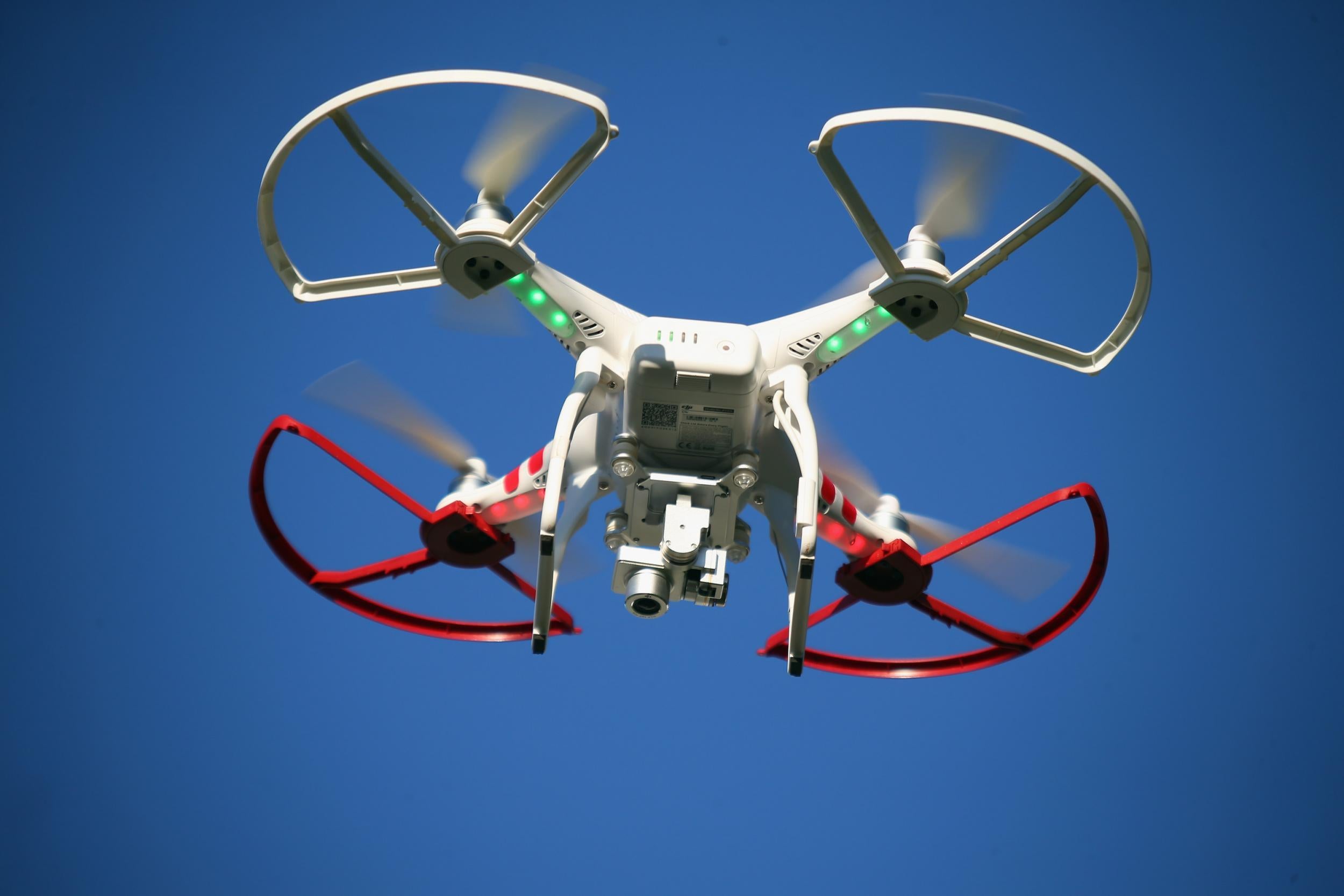Google reveals plan to use drone deliveries without putting your pet dog at risk
Google says it wants to solve problem of how to fly drones safely without endangering pets or other potential obstacles

Using drones to deliver packages to our yards has long piqued the interest of some consumers and tech companies as a way to speed a process that can take days to one that happens in minutes. But a new Google patent reveals that before the tech giant makes drone delivery a reality, it wants to solve the problem of how to fly drones safely in yards without endangering pets or other potential obstacles.
Earlier this week Google received a patent for a system in which a hovering drone would lower goods into a cart, which would then transport the package to a safe holding spot, such as in a garage. This would lessen the potential for some backyard calamities.
“Unmanned aerial delivery devices may be problematic for delivery to users,” the patent authors wrote, citing pets, overhead power lines and ceiling fans as potential obstacles. “Conventional aerial delivery device methods do not allow for safe, secure delivery of packages to delivery locations.”
The patent addresses the concern that drones may have difficulty finding a safe place to leave a package. It mentions the risk of leaving a package on a front porch, which may be stolen.
The patent calls for a delivery bin at the destination that would transmit its location to the drone. The drone would know exactly where to bring its package, and not have to touch down on the customer’s land. Google says the drone may drop the package or lower it via a cable, an approach Google has previously demonstrated. The patent says the bin may use a hatch or door to secure the package inside it.
The patent says the motorised bin would then transport the package to a safe location, or drop it in a mail slot. The approach is different from Amazon, a drone delivery competitor who has shown demo videos of drones touching down on a backyard mat after a customer confirms their yard is clear.
Google declined to comment on the patent. Dave Vos, who leads Google’s drone efforts, has previously said the company hopes to operate a delivery system by 2017.
Google is not the only one to tackle concerns that the nature of yards and neighborhoods will make drone delivery difficult.
Earlier this month a prominent drone researcher at NASA suggested to The Post that 10-foot-tall mailboxes could be installed for drones to land on. At that height pets and children would be better isolated from potential run-ins. He also suggested that chimneys could be converted into delivery chutes for drone packages.
Disclosure: Amazon chief executive Jeffrey P. Bezos owns The Washington Post.
Copyright: Washington Post
Subscribe to Independent Premium to bookmark this article
Want to bookmark your favourite articles and stories to read or reference later? Start your Independent Premium subscription today.

Join our commenting forum
Join thought-provoking conversations, follow other Independent readers and see their replies